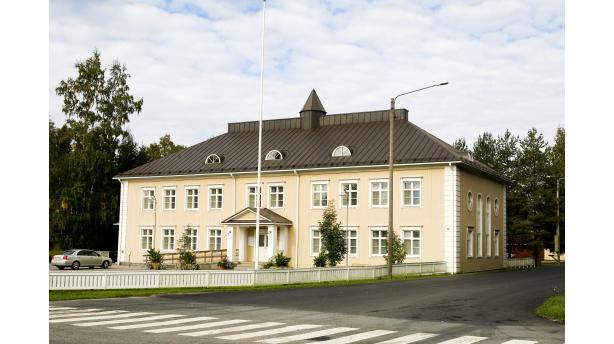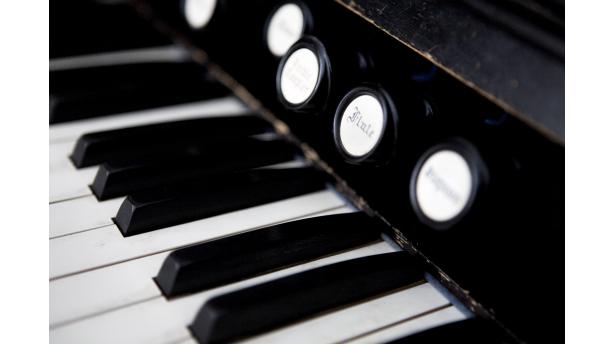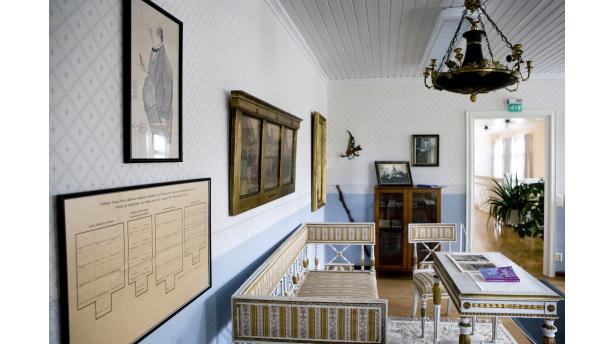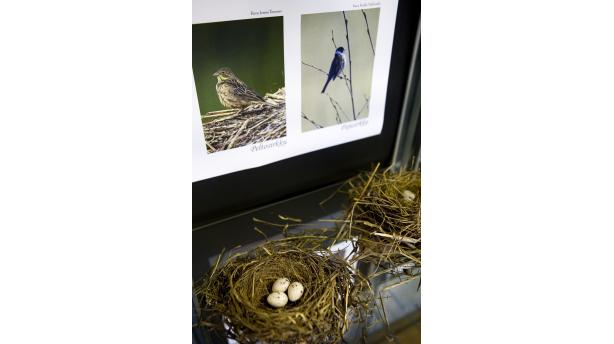Museum A-Ö » Art and artists » Culture House Orrela
Culture House Orrela




Did you know...
The exhibition also includes a caricature portrait of Ingman. It is a replica of the original one owned by former prime minister Paavo Lipponen.
The emphasis of the Culture House Orrela is on the famous people of the region, but the building itself also conceals many interesting stories about the history of the locality. The scientific exhibition displays a vast collection of various bird species and nests.
In the Culture House are presented important people of their own time from Teuva, such as Lauri Ingman and Simo Korpela. Ingman was a politician born in Teuva in 1868, who later became the archbishop. He worked as the prime minister twice during his long political career. One drawing room in Orrela has been furnished with furniture, which belonged to Ingman in a style typical for the period. In the same drawing room are also items that used to belong to Simo Korpela (1883-1936). Simo Korpela was a hymn writer and provost from Teuva. He wrote over 900 poems, out of which around 150 have been composed. For instance his harmonium from the year 1895 is exhibited in Orrela.Jussi Seppä’s scientific collection displays bird nests, that have been collected since 1916. Ancient findings and coins prove, that the area has been inhabited already in the 11th century. In Lautamäki in Teuva has been discovered an ancient piece of jewellery, which’s model has been copied in a modern Kalevala piece of jewellery. The second part of the exhibition tells about the school of past times and displays old school books.
The Orrela building was designed by the site foreman of the South Ostrobothnian agrarian society, Frans Rekola. The building consisting of 19 rooms and 750 m2 was completed in 1924. It has been in various uses during the decades. Sewing circles, bible study circles and confirmation schools were initially held there, but the municipality also rented a part of the building e.g. for district court purposes. The building was important also during the wars in the 1940s, when for instance the National Care functioned in the downstairs premises. The organization gathered various Finnish voluntary groups to distribute food and clothes in emergency situations. The postal service, which had been evacuated from Helsinki, simultaneously moved to the upstairs premises temporarily.
The Räisälä folk high school, which was oriented among other things towards agriculture, home economics and handworks, was moved for a number of years in the 1940s from Karelia to Teuva. Between the years 1947 and 2000 in Orrela have operated for instance an elementary school, a co-educational school, a middle school, an adult education centre, an auxiliary school and a high school. In 1941 the building served as an epidemic disease hospital during the typhoid fever epidemic, that rampaged in Finland. When the church of Teuva was destroyed in a fire in 1950, the congregation used the building as a temporary church for nearly four years. Nowadays in the building functions Culture House Orrela, and various cultural events are arranged there, as well as meetings and celebrations.



